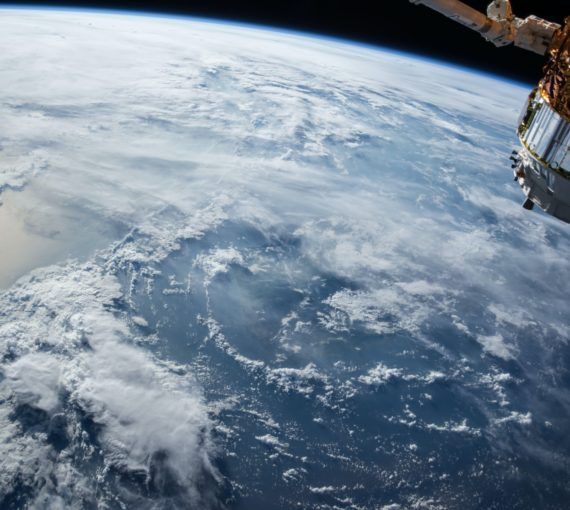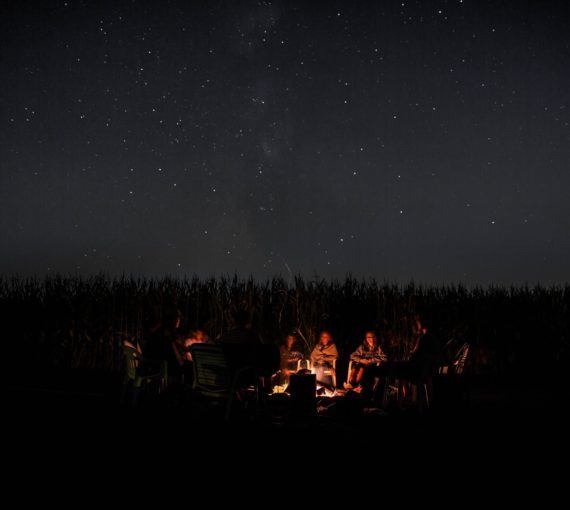
Our major crises stem largely from ways of thinking that are limited to parts and immediacy, that fail to see how the whole is affected by and affects everything that interacts with and within it. (Photo: Sven Schlager via Pexels)
When scientist James Lovelock suggested more than 50 years ago that Earth regulates itself like a living organism, many in science and academia ridiculed his idea. As he later wrote, “the mainstream view then was the neo-Darwinist one that life adapts to the environment, not that the relationship also works in the other direction, as we argued.”
Lovelock, who died on his 103rd birthday July 26, was correct. As he pointed out, climate disruption and rainforest destruction show that humans are affecting the global environment, which is responding in ways that aim toward some kind of equilibrium — with or without humans. He also understood that a major drawback to Western science is reductionism, the tendency to compartmentalize phenomena, often obscuring how components interconnect and interact as part of something larger.
For Lovelock, separating the climate and forest biodiversity crises “is as much of a mistake as the error made by universities when they teach chemistry in a different class from biology and physics. It is impossible to understand these subjects in isolation because they are interconnected.”
It’s why both Indigenous knowledge and Western science are needed to understand how to live better on this small, wonderful planet. While taking things apart and examining how the pieces work is useful and important, we have to look at how those parts interconnect with everything else, to see the whole — as Indigenous Peoples who have lived in place for millennia have done.
It is impossible to understand these subjects in isolation because they are interconnected.
This more holistic way of seeing underpins much of climate science today, as it’s clear the climate is connected to all systems that affect Earth, and that they all help regulate the whole. Lovelock noted that Earth’s surface temperature is determined mainly by radiant heat from the sun, but temperatures have “remained relatively stable thanks to Gaia: forests, oceans and other elements in the Earth’s regulating system, which kept the surface temperature fairly constant and near optimal for life.”
We’ve now upset that balance, burning coal, oil and gas in our automobiles, factories and homes and pumping massive amounts of greenhouse gases like carbon dioxide, methane, nitrous oxide and more into the atmosphere at accelerating rates. At the same time, we’ve hindered Earth’s ability to absorb and sequester excess carbon from the atmosphere by destroying and polluting wetlands, peat bogs, forests, grasslands, waterways and seas.
Gaia is responding.
Our understanding of the climate crisis and its causes — and solutions — is growing by leaps and bounds, although basic knowledge about greenhouse gases is at least 200 years old.
But mainstream forest ecology has only recently started seeing the forest and the trees. Reductionist, capitalist thinking made many see forests as little more than stands of valuable timber — with a few “weed” species in the way — each individual tree worth more cut into boards or pulped into chips than an interdependent life form playing its role in a forest ecosystem.
This more holistic way of seeing underpins much of climate science today, as it’s clear the climate is connected to all systems that affect Earth, and that they all help regulate the whole.
As with Lovelock, when forest ecologist Suzanne Simard suggested that forests are more than just their parts, that they’re intricately connected systems that communicate and share and strive toward equilibrium, her ideas were initially derided and mocked.
We now have a much greater understanding of forests and the fungal networks that connect trees. Through intricate mycelial webs, fungi and trees redistribute and share nutrients and water, and send almost instant recognition and warning signals to each other.
In Braiding Sweetgrass, Robin Wall Kimmerer writes that Indigenous Elders have long spoken of trees communicating. “There is now compelling evidence that our elders were right — the trees are talking to one another.”
Our major crises stem largely from ways of thinking that are limited to parts and immediacy, that fail to see how the whole is affected by and affects everything that interacts with and within it. The climate and biodiversity crises, growing mainstream recognition of the importance of Indigenous knowledge and increasing understanding of ecosystem interconnectedness all point to the necessity of embracing and acting on this increasing awareness quickly if we want to avoid catastrophe.
As Lovelock wrote before he died, “humans must learn to live in partnership with the Earth, otherwise the rest of creation will, as part of Gaia, unconsciously move the Earth to a new state in which humans may no longer be welcome.”



